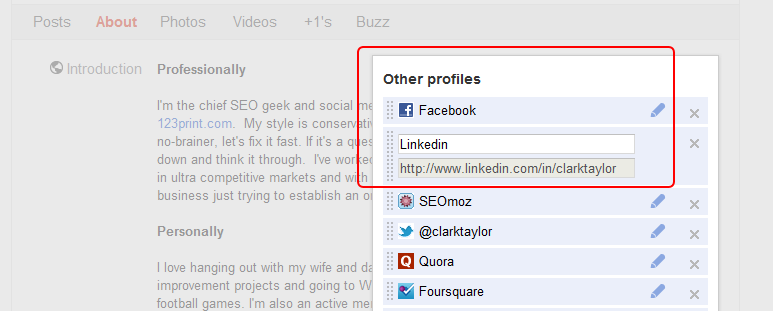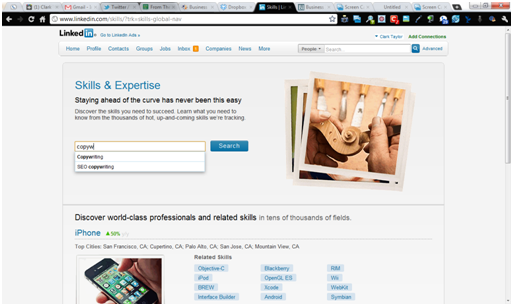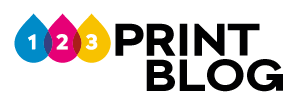![]()
When partners, co-workers or potential employers search for your name, what social profile would you prefer them to see? If you’re a small business owner or white-collar professional; chances are you’d prefer them to see your Linkedin profile. Why? Because it’s real! You can’t fake a good Linkedin profile.
These tips and suggestions should be used with Linkedin’s suggestions to get your profile to 100% completeness.

Here are 10 relatively easy things you can do to improve the quality and visibility of your Linkedin profile:
1. Use a professional-looking photo. You don’t necessarily need to pay for a professional portrait. Almost everyone has a friend who is a part-time photographer or someone who can take a decent picture. And you should at least wear something other than your college sweatshirt. This is not Facebook where it’s completely acceptable to use a photo of your kid or a picture of you with your buddies hanging out or playing drinking games. This is your “professional profile.”
I’ve seen others give the advice of using the same photo on every profile. Although I’m currently using the same photo on Linkedin, Facebook, Twitter and Google+, I disagree a little on this. I think you should always use a recent photo that actually looks like YOU. Not what you looked like 10 or 20 years ago. Is it just me, or are real estate agents famous for this? Anyway, I think it’s ok to be a little more casual or have some fun on Facebook or Twitter.
2. Complete Descriptions and Details. This is probably the most time consuming of all these tips, but it’s essential to having quality profile. Add company and job descriptions for all current and past experiences; take some time and write a professional summary that really explains who you are and what you’re all about. Try not to use overused buzzwords such as “extensive experience,” “innovative,” “motivated,” “team player,” etc. They’re so overused it immediately makes someone think, “BS!” Use facts, specific projects and actual examples to explain your roles.
3. Create a custom, personal URL. This is so easy and so few people do it. Make sure you’re logged in and then go to http://www.linkedin.com/profile/public-profile-settings. There you should see the option to “Customize your public profile URL.” I recommend using your first and last name without spaces as your custom URL. If your name is already taken, use your first and last name with your middle initial.

And don’t try to stuff your custom URL with keywords. The only keyword we’re optimizing for is your name!
4. Build professional connections. Once you’ve added current and previous employers, Linkedin’s suggestion engine will help you find connections by listing people you may know. You should invite anyone you’ve ever worked with (unless of course you don’t want to be associated with them) to join your network on Linkedin. I don’t think you need to write a custom invitation for people who know you. Linkedin’s standard “I’d like to add you to my professional network on LinkedIn” will work just fine for people who know you fairly well. If you’re trying to connect with people who may not remember you, then you might want to customize the invitation and remind them of where you met or how they know you.
5. Seek professional recommendations. The easiest way to get a recommendation is to ask for one. The second easiest way to get a recommendation is to give a recommendation. Give recommendations freely to those you feel deserve it. If you recommend someone, it’s going to be visible on your profile and the profile of the person you recommended for all to see. So, if you recommend someone and they do a terrible job, it might reflect negatively on you! Be careful when recommending or seeking recommendations from colleagues or people you currently work with. By default, recommendations are visible on your profile and are broadcasted to your entire network. To your boss it might look like you or the person you’re recommending is looking for a new job. BTW, if you ARE looking for a new job, you can turn this off under “Privacy Controls” inside “Settings” by un-checking the box next to “Let people know when you change your profile, make recommendations, or follow companies.”

Get real recommendations from your previous supervisors, clients, partners and consultants. If you can, get recommendations from recognized industry experts. It’ll help establish you as an expert and build your authority on Linkedin.
6. Update it frequently. Yes, just like you would your Facebook, Twitter or G+ page. And although there are tools to automatically share your Twitter and Facebook posts on Linkedin, I don’t recommend using them. Have some stuff on your Linkedin page that is unique to your Linkedin page. I like using the hashtag #li or #in to designate tweets to get posted to my Linkedin page. The setting to allow the use of these special hashtags is here. You can also look for the Share on Linkedin button found on many websites instead of always clicking the common Tweet or Like buttons. I also like to occasionally change my professional headline. Sometimes it might say “Chief SEO and Social Geek at 123Print” or I might change it up a bit to something like “Organic marketer and social media evangelist.” My headline is the one area where I let myself be a little un-professional when it comes to my Linkedin profile. Your formal, official, stuffy title will still be listed under the Experience section of your profile.
7. Link to it and from it. Link to your Linkedin profile (using your new custom URL) from your website, blog, email signature and other social profiles. If you have the option to customize the html associated with the link, add a rel=“me” element to it. It helps search engines understand which pages are about you. Google+ automatically adds the rel=“me” element when you add “Other profiles.”

Don’t forget, Linkedin allows you to link to 3 other web properties. I recommend you link to your primary business website, your business or personal blog and another favorite social media profile other than Twitter. Google has a separate area to add your Twitter account, so don’t waste 1 of your 3 links on Twitter. When selecting your links, always opt for “Other” instead of “Personal Website,” “Business Website,” etc. This will allow you to create custom anchor text and include your brand in your links.
 Be sure to connect your Twitter account. Linkedin recently added a “Follow” button which will let people follow your Twitter account without leaving your Linkedin profile.
Be sure to connect your Twitter account. Linkedin recently added a “Follow” button which will let people follow your Twitter account without leaving your Linkedin profile.
8. Add skills. A few months ago Linkedin added Skills. This feature (currently in Beta) does just what you think…it lets you add your skills to your profile. People actually use Linkedin as a search engine. If your skills are listed, there’s a better chance of your profile appearing in their Linkedin search results.

Don’t be disappointed if you don’t appear on the first pages of Linkedin’s Skills & Expertise search. Just adding your skills will not likely be enough for you to appear on the first page. Like Google, Linkedin has an algorithm which seems to place an emphasis on connections and authority.
9. Join in and participate. Just setting up a profile is going to do very little for building your personal brand. You have to be active and take part in conversations relevant to your field or your interests. You can do this by joining industry groups, joining in conversations, and by answering and asking questions. If you truly are an expert, it’s going to show with the contributions you make.
10. Get it 100% Complete. All the tips above should have your profile very close to 100% complete. Linkedin will show you (graphically) how close you are. If you’re not at 100%, just follow Linkedin’s instructions until you’re there!


No Comments